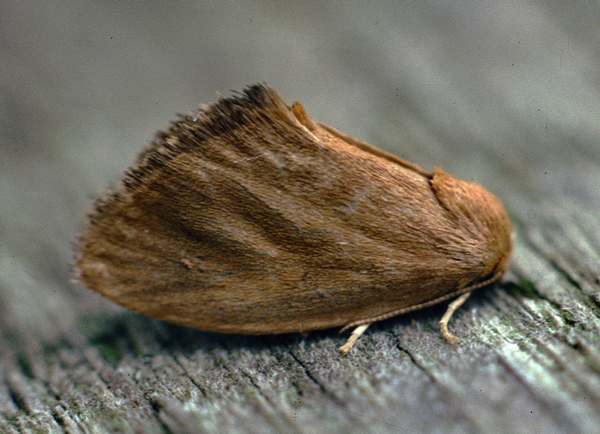Triangle Moth - Heterogenea asella
Phylum: Arthropoda - Class: Insecta - Order: Lepidoptera - Family: Limacodidae

The Triangle Moth is very small and can easily be confused with other similar-looking species, but when resting it has a distinctive triangular, tent-like shape. To add to the confusion some male specimens are very dark while some females are almost yellow.
This moth flies mainly at night in June and July in its habitat which is Oak and Beech woodland.
The wingspan of theTriangle Moth ranges between 15 and 20mm.
Distribution
In Britain and Ireland this moth is more common in the south. It is widespread but localised.
Lifecycle
The strange grub-like larvae of the Triangle Moth have short legs and a retracted head. They over-winter in a cocoon on a leaf or twig once they have finished feeding around October.
The larval foodplants of the Triangle Moth are Oak and Beech trees.
Picture: Rob Petley-Jones
Studying butterflies and moths...
Excited at the prospect of flyfishing? So are we, and we're pretty sure you would find the Winding River Mystery trilogy of action-packed thrillers gripping reading too. Dead Drift, Dead Cert, and Dead End are Pat O'Reilly's latest river-and-flyfishing based novels, and now they are available in ebook format. Full details on our website here...
Buy each book for just £4.96 on Amazon...
Please Help Us: If you have found this information interesting and useful, please consider helping to keep First Nature online by making a small donation towards the web hosting and internet costs.
Any donations over and above the essential running costs will help support the conservation work of Plantlife, the Rivers Trust and charitable botanic gardens - as do author royalties and publisher proceeds from books by Pat and Sue.
